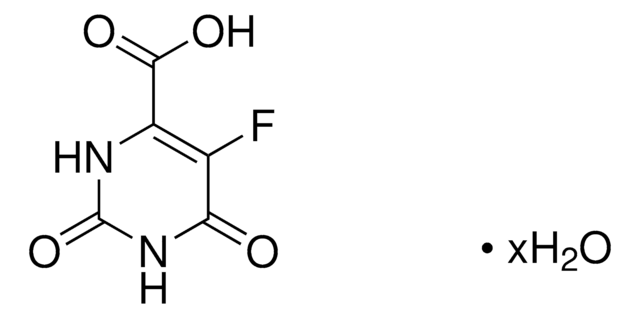74667
Nourseothricin sulfate
≥85% (HPLC)
About This Item
Produits recommandés
Source biologique
Streptomyces noursei
Niveau de qualité
Pureté
≥85% (HPLC)
Forme
solid
Couleur
white to light brown
Solubilité
H2O: soluble 200 mg/mL
Adéquation
suitable for (selection agent for molecular genetic research work)
Spectre d'activité de l'antibiotique
Gram-negative bacteria
Gram-positive bacteria
fungi
mycobacteria
mycoplasma
parasites
viruses
yeast
Mode d’action
protein synthesis | interferes
Température de stockage
2-8°C
Description générale
Application
Actions biochimiques/physiologiques
Conditionnement
Autres remarques
Mention d'avertissement
Warning
Mentions de danger
Conseils de prudence
Classification des risques
Acute Tox. 4 Oral
Code de la classe de stockage
13 - Non Combustible Solids
Classe de danger pour l'eau (WGK)
WGK 3
Point d'éclair (°F)
Not applicable
Point d'éclair (°C)
Not applicable
Équipement de protection individuelle
dust mask type N95 (US), Eyeshields, Gloves
Certificats d'analyse (COA)
Recherchez un Certificats d'analyse (COA) en saisissant le numéro de lot du produit. Les numéros de lot figurent sur l'étiquette du produit après les mots "Lot" ou "Batch".
Déjà en possession de ce produit ?
Retrouvez la documentation relative aux produits que vous avez récemment achetés dans la Bibliothèque de documents.
Les clients ont également consulté
Notre équipe de scientifiques dispose d'une expérience dans tous les secteurs de la recherche, notamment en sciences de la vie, science des matériaux, synthèse chimique, chromatographie, analyse et dans de nombreux autres domaines..
Contacter notre Service technique

















